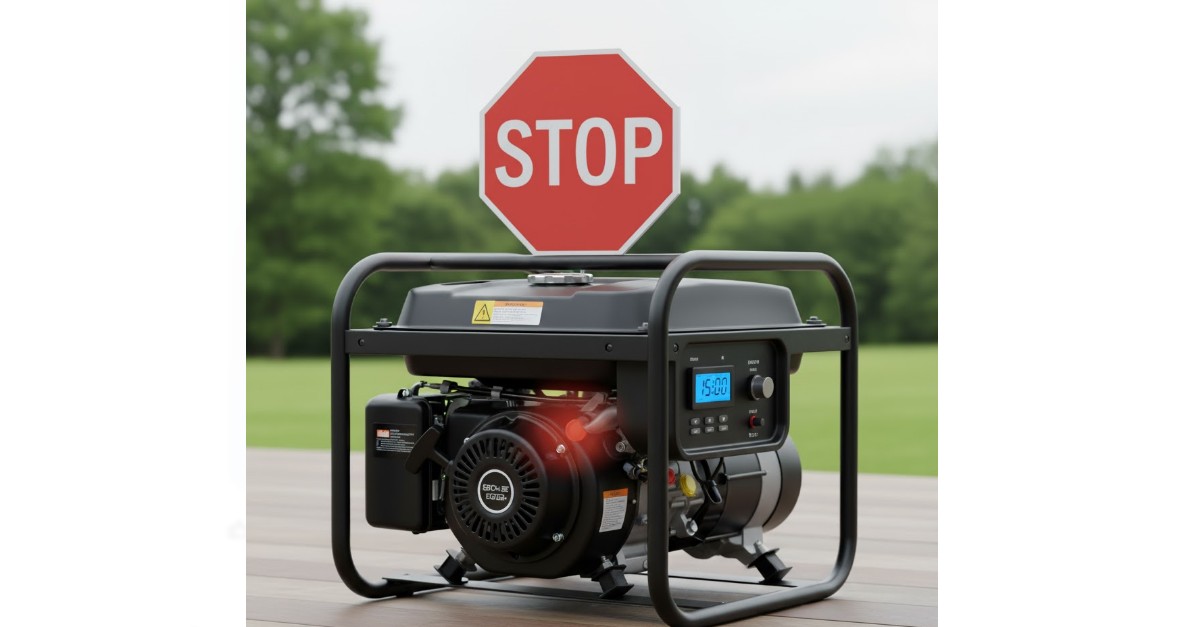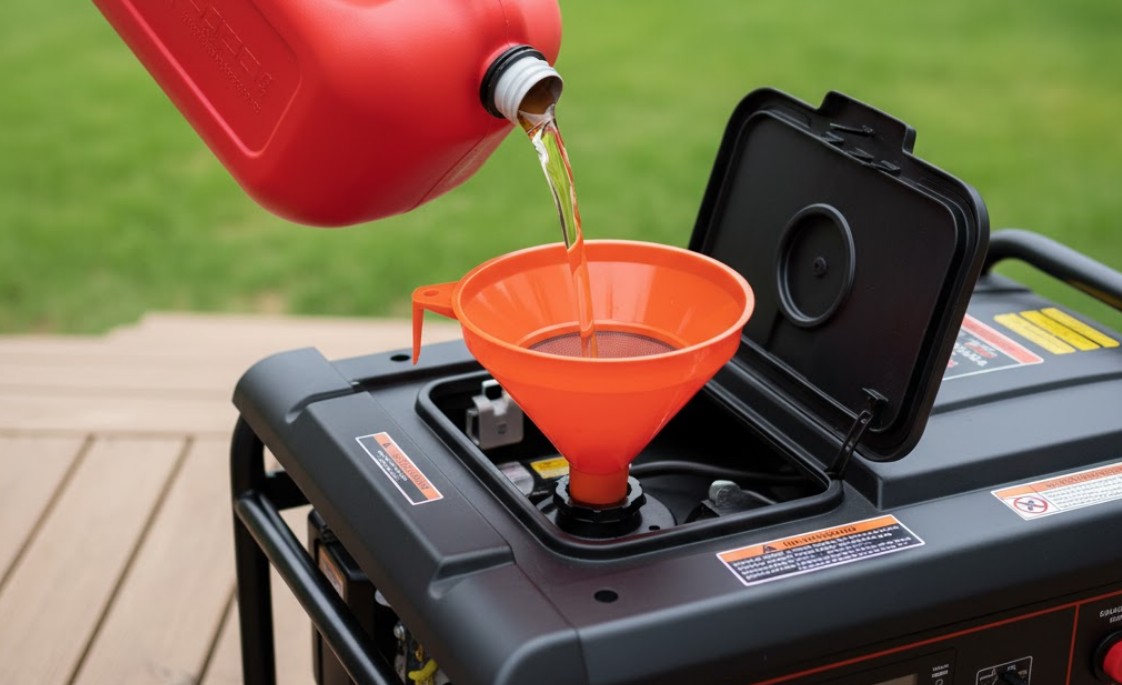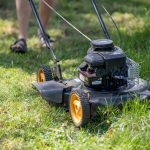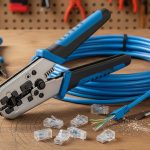A portable generator is an absolute lifeline when the power goes out, providing essential electricity for everything from keeping your refrigerator running to charging critical communication devices. They are indispensable during storms, natural disasters, or even remote outdoor projects. However, this powerful, convenient technology comes with a profound responsibility: the safe handling of fuel and the generator itself. Mishandling gasoline or diesel while the generator is hot or running is one of the quickest ways to turn a lifesaver into a dangerous hazard, potentially resulting in severe burns, fire, or explosion.
Understanding the proper, safe generator refueling process is not just about following a manufacturer’s guideline; it’s a non-negotiable step in maintaining your personal safety, protecting your property, and ensuring the longevity of your equipment. This comprehensive guide is designed to walk you through every critical stage of the refueling process, from pre-planning and fuel storage to the cooldown phase and the actual pouring of fuel. Furthermore, we will delve into the distinct risks associated with different generator types, like portable gasoline generators versus diesel generators, equipping you with the knowledge to handle any situation with confidence and care. Therefore, let’s start by establishing the most fundamental and critical rule of generator refueling.
The Non-Negotiable Core Rule: Always Shut Down and Cool Down
Before you even think about approaching your running generator with a fuel can, you must commit this rule to memory: Always turn the generator off and allow it to cool completely before adding fuel. This is the single most important safety measure in the entire refueling procedure. Gasoline and diesel fuels are highly flammable, but it is actually the fuel vapors that pose the greatest risk. The fumes can easily ignite when they come into contact with a hot surface.
A generator engine, muffler, and exhaust system reach extremely high temperatures during operation. Spilling even a small amount of fuel onto these hot components can cause the fuel vapors to instantly ignite, leading to a flash fire or explosion. Accordingly, the cooling process is crucial. You must allow a minimum of 15 to 20 minutes for a typical portable generator to cool sufficiently. While this waiting period can feel inconvenient, especially during a power outage, it is a small price to pay for safety. By strictly adhering to this shutdown and cooldown protocol, you eliminate the most common cause of refueling fires.
The Science of the Fire Hazard
To fully appreciate the danger, consider the concept of a fuel’s “flash point”—the lowest temperature at which a liquid can form an ignitable mixture in air near its surface. Gasoline has an incredibly low flash point, often around -40°F (-40°C). This means that even in freezing temperatures, gasoline is constantly giving off flammable vapors. Diesel fuel is significantly safer, with a flash point typically above 126°F (52°C), yet a hot generator engine can easily exceed that temperature. Consequently, no matter the fuel type, the risk of ignition when refilling a hot engine is very real. Therefore, exercising patience and caution is the only responsible course of action.

Phase 1: Pre-Refueling Safety Checks and Preparation
Long before the low-fuel light comes on, a responsible generator owner must have a safety plan in place. Preparation minimizes the risk of a frantic, unsafe refill when the power is already out. This phase covers everything from personal safety equipment to the environment where the refueling will take place.
1: Personal Protective Equipment (PPE)
When handling highly volatile fuels, you should always wear appropriate PPE. This includes: Safety glasses or goggles to protect against splashes and vapors; chemical-resistant gloves (like nitrile or fuel-specific work gloves) to protect your skin from fuel exposure; and appropriate clothing that covers your arms and legs. Avoid loose clothing that could accidentally catch on the generator or soak up spilled fuel.
2: Preparing the Refueling Site
The refueling location is as important as the process itself. You must always refuel your generator outdoors and in a well-ventilated area. This prevents the buildup of flammable fuel vapors. Furthermore, keep the generator away from any sources of ignition. This includes open flames, pilot lights (like those on a water heater), or any electrical sparks. Ensure your refueling area is clear of all combustible materials, such as dry grass, rags, or paper. Also, having a functioning Class B fire extinguisher nearby is a crucial safety precaution that can make the difference in an emergency.
3: Inspecting Fuel Containers and Hoses
Never use old milk jugs or non-approved containers for fuel storage. Gasoline, diesel, and kerosene must be stored in containers that are specifically approved by safety standards organizations (e.g., UL, FM). These containers are designed with safety features like flame arrestors and secure caps to mitigate fire risks and control vapor release. Take a moment to inspect your fuel cans for cracks, leaks, or rust before using them. If you are using a transfer pump, check the hose and nozzle for any wear or damage. For more in-depth information on safe fuel storage, it is highly recommended to review the guidelines on storing fuel for generator use.
Phase 2: The Step-by-Step Safe Refueling Procedure
Once your generator is cool and your site is prepared, you can proceed with the actual refueling. Each step in this sequence is designed to control hazards and prevent accidental ignition.
1: Complete Power and Engine Shutdown
To reiterate for emphasis: The generator must be off. Turn the ignition switch to the “OFF” position. If your generator has a circuit breaker, ensure that it is also in the “OFF” or “Open” position. Disconnect any electrical load from the generator. This means unplugging the extension cords—especially the heavy-duty, outdoor-rated ones you should be using—or ensuring your transfer switch is fully disengaged. This eliminates any possibility of a spark from the electrical system during the process. For those who may be using a generator for a commercial application, like powering a food truck, the safety considerations are even more critical. You can learn more about suitable options by exploring best generators for food truck.
2: Allow Adequate Cooling Time
As discussed, wait a minimum of 15 to 20 minutes. You can lightly touch the engine block or muffler to gauge the temperature, but use caution—they may still be hot. If you can’t comfortably hold your hand near the metal for a full five seconds, it’s still too hot to refuel. The generator must be cool to the touch. This waiting period is critical for allowing internal pressure to equalize and for surface temperatures to drop below the fuel’s flash point.
3: Employing Grounding Techniques to Prevent Static
Static electricity is a surprisingly common, yet often overlooked, ignition source during refueling. When you pour fuel, the friction can generate a static charge that could spark, especially in dry conditions. To prevent this, place your fuel container on the bare ground (concrete, dirt, or grass) while pouring, not on the generator’s frame, a truck bed, or a plastic sheet. This simple step helps to dissipate any static charge. Moreover, if your generator is equipped with a grounding terminal, ensure you understand how to ground your generator safely to further minimize electrical risks.

4: The Controlled Pour
When the generator is cool and the container is grounded, it’s time to pour the fuel. Always use a funnel. This is not optional. A wide-mouth, anti-splash funnel will direct the fuel precisely into the tank opening and help prevent spills onto the hot engine casing. Pour slowly and steadily. Never rush the pour. Overfilling the tank is another major hazard, as the fuel can splash or expand with heat, leading to spillage. Stop filling when the fuel reaches the level indicated in your owner’s manual—typically below the neck of the filler pipe to allow for fuel expansion.
5: Immediate Cleanup and Securing the System
If you do spill fuel—and accidents can happen—stop immediately. Use a spill kit or absorbent materials (like a rag or paper towel) to soak up the spill. Place the contaminated materials in an approved, sealed container away from the generator and any ignition sources. Once the area is clean, securely replace the generator’s fuel cap. Also, ensure the fuel container is tightly sealed before moving it away from the generator. The generator should not be restarted until all fuel vapors have had time to dissipate, and the spilled fuel has been removed.
Phase 3: Essential Differences in Fuel Types
While the core safety principle of “shut down and cool down” applies universally, different fuel types introduce unique storage and handling considerations.
1: Gasoline Generators
Gasoline is the most common fuel for portable generators but is also the most volatile due to its low flash point. The high volatility means that the vapors are easily released and travel further, increasing the risk of flash fire. Gasoline is also prone to degradation over time, which can lead to engine damage. Therefore, the use of fuel stabilizers is critical for any stored gasoline. Proper rotation of your fuel supply is also essential to ensure peak performance when you need it most. Furthermore, be sure to use the specific oil type recommended by your manufacturer for gasoline engines to maintain your warranty and engine health. Information about recommended oils can often be found by searching topics like best oils for generator.
2: Diesel Generators
Diesel fuel is less volatile and safer to handle than gasoline, but it still presents a fire risk when spilled on a hot engine. The main considerations with diesel often relate to fuel quality and tank maintenance. Diesel is susceptible to microbial growth (the infamous “diesel bug”) and water contamination, which can clog filters and injectors. While some commercial and industrial diesel generators have external, easily accessible tanks, portable models still require the same safety precautions during refueling. The low volatility does make accidental ignition slightly less likely, but the “cool down” rule remains absolute.
3: Propane (LPG) Generators
Propane generators, often called dual-fuel generators, use pressurized fuel in sealed tanks. The refueling process here is drastically different—you are replacing a tank, not pouring liquid fuel. The main safety concerns are:
1. Leakage: Always check the connection point between the propane tank and the generator for leaks (a soapy water solution works well).
2. Tank Handling: Ensure the propane tank is secured and upright during operation and transport. Propane is heavier than air, so any leak can pool in low areas and pose an invisible explosion risk.
3. Tank Exchange/Fill: Always rely on a professional or certified filling station to refill or exchange your propane tanks. Never attempt to fill a propane tank yourself.
Phase 4: Common Refueling Mistakes and How to Avoid Them
Even experienced generator users can make mistakes, especially when stressed or tired during a long power outage. Acknowledging these pitfalls is the first step toward avoiding them entirely.
1: Refueling While Running or Hot
This cannot be overstated: the biggest mistake is refueling a generator while it is running or before it has cooled down. The perceived need to maintain continuous power is never worth the risk of a fire or severe injury. If continuous power is required, the best practice is to invest in a secondary, smaller generator to use as a temporary power bridge while the main unit cools for refueling, or consider a permanent, professionally installed standby generator with a separate, often self-contained, fuel source.
2: Using Unapproved Fuel Containers
Plastic milk jugs, water bottles, or even certain older metal cans are simply not designed to safely contain and dispense volatile fuels. They lack proper venting, secure seals, and flame arrestors. Using anything other than an approved, labelled fuel container significantly increases the risk of a spill or explosion. Furthermore, the use of a plastic container can promote the build-up of static electricity, which, as we’ve noted, is a serious ignition hazard.
3: Smoking or Using Open Flames Nearby
This should go without saying, but smoking, using a lighter, or having any open flame (like a nearby candle or pilot light) while refueling is extremely dangerous. The invisible fuel vapors can travel a significant distance to an ignition source and flash back to the generator or the fuel container. Maintain a safe, ignition-free zone of at least 25 feet around your generator and fuel containers at all times.
4: Refueling Indoors or in Partially Enclosed Spaces
Never, under any circumstances, refuel a generator inside a garage, basement, shed, or any partially enclosed area. Besides the fire risk from accumulated vapors, running a generator indoors poses the lethal risk of carbon monoxide (CO) poisoning. CO is colorless and odorless, and it kills quickly. If you must refuel in a sheltered area due to rain or snow, use an open-sided canopy or an approved generator tent, but ensure maximum airflow and maintain the required clearance from all openings to your home.
Phase 5: Generator Maintenance Beyond Refueling
A well-maintained generator is a safer generator. Routine care ensures that all components, including the fuel system, are functioning correctly, which inherently minimizes the risk of spills, leaks, or malfunctions during the refueling process.
1: Regular Engine Oil Checks and Changes
Just like a car, your generator needs clean oil to run efficiently. Check the oil level before each use and change it according to the manufacturer’s schedule. Low or dirty oil can cause the engine to overheat, increasing the risk of fire and making the cool-down phase longer and more uncertain. Using the right quality of oil is critical, as detailed in articles concerning best oils for generator, which will ensure optimal lubrication.
2: Fuel Filter and Line Inspection
Inspect the fuel filter and fuel lines regularly for cracks, leaks, or wear. A damaged fuel line can leak fuel onto a hot engine or exhaust, creating an instant fire hazard. Replace any worn components immediately with parts approved by the manufacturer. Clean filters ensure that the engine receives a steady, clean supply of fuel, which improves efficiency and reduces the chance of operational issues that could necessitate an unplanned, risky shutdown.
3: Pre-Use and Post-Use Checks
Before starting your generator, conduct a quick walk-around. Look for signs of damage, ensure the generator is level, and check that the exhaust port is clear of debris. After use, once the generator is cool, clean up any dust or debris that accumulated during operation. This simple, preventative maintenance cycle is an integral part of safe generator operation.
Amranul is a highly experienced product review writer with a passion for helping readers make smart, informed purchasing decisions. Since 2018, he has specialized in thoroughly researching and analyzing a wide range of products to deliver honest, in-depth reviews. Amranul combines technical accuracy with clear, engaging writing to break down complex product features and highlight true user value. Look for his reviews to find reliable information and expert insights you can trust before you buy!





